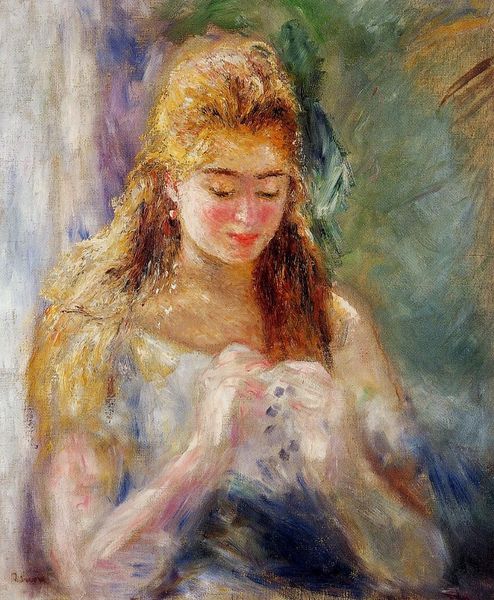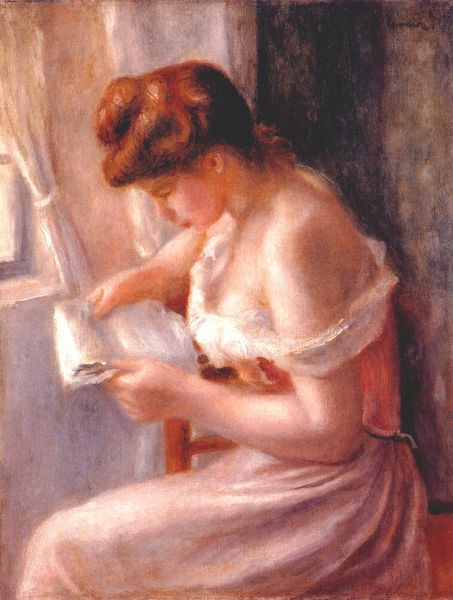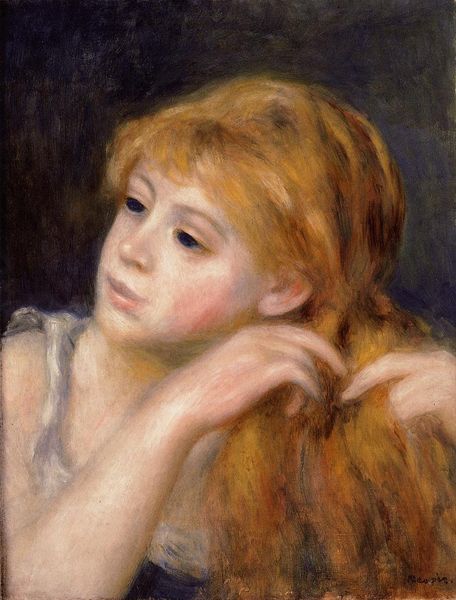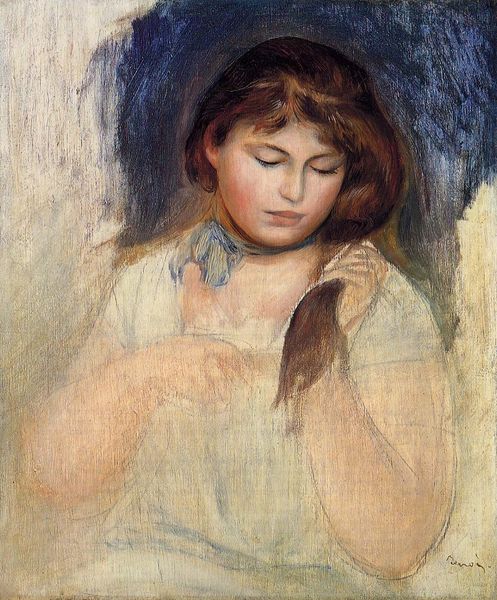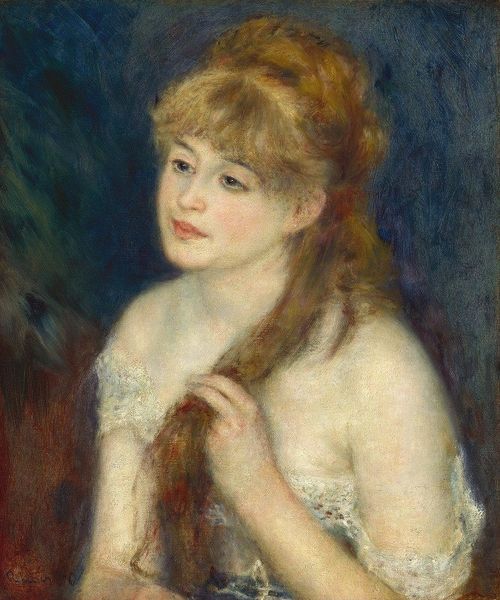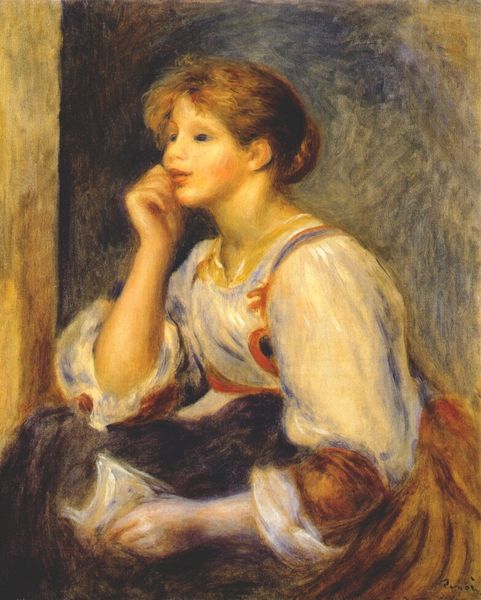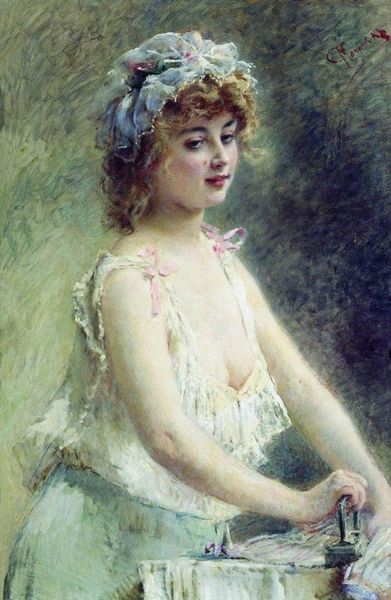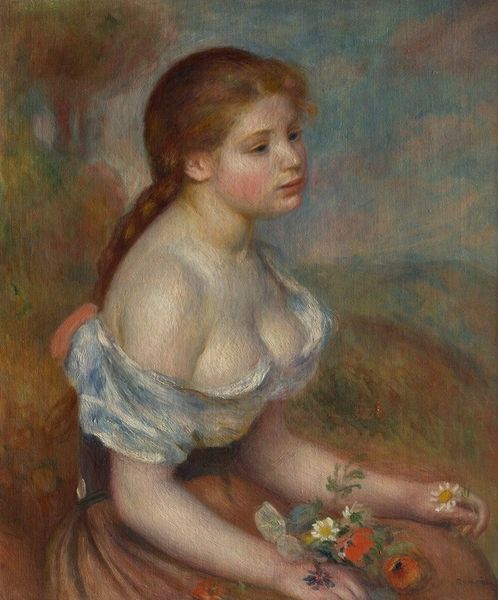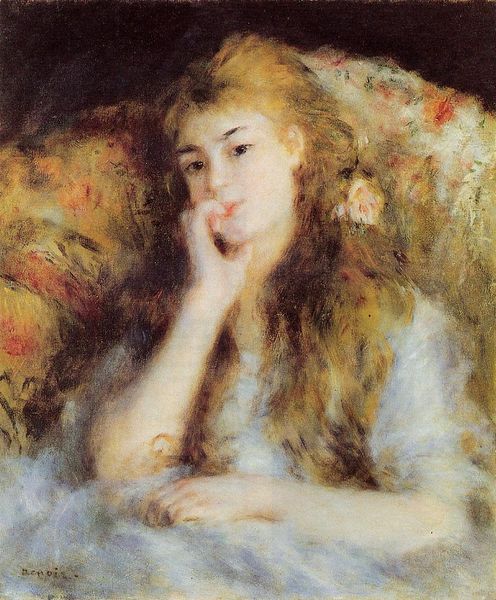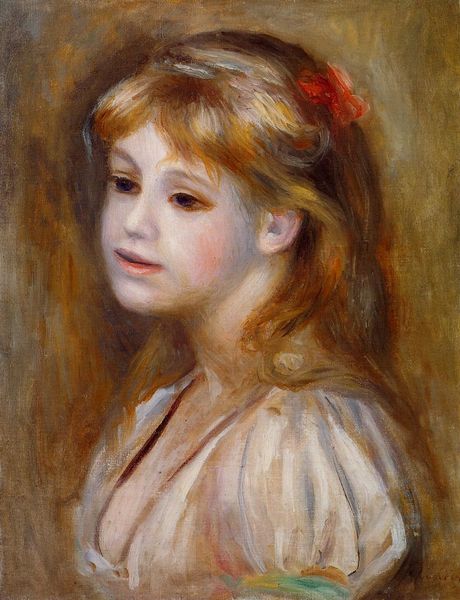
painting, oil-paint
#
portrait
#
painting
#
impressionism
#
oil-paint
#
oil painting
#
genre-painting
Copyright: Public domain
Curator: Isn’t it curious how some paintings whisper, rather than shout? That's how I feel encountering Renoir's "Girl Crocheting" from 1875. There's such a quietude to it. Editor: Absolutely. My immediate impression is this muted light, like a scene almost fading into a memory. What captures my attention, though, is the intense concentration on the repetitive handwork. Crocheting—it speaks volumes about labor, domesticity, and the societal expectations placed on women at the time. Curator: Exactly. Renoir gives us more than just a woman; he hints at a world. Her golden hair cascades down, but her focus is entirely on that loop of thread. Do you get the feeling he's romanticizing the everyday? Editor: Romanticizing, perhaps, but I also see it as documentation. Crochet, then and now, is a material process, a specific set of actions involving yarn and hook, a method, not a muse. Curator: Tell me more... Editor: Look at the almost hazy background, the soft brushstrokes everywhere but in the fine web the girl is creating. What did it mean to spend your hours crafting something beautiful and intricate? For sale? Or her trousseau? Was she thinking of escaping these mundane necessities while creating a dowry, so that she could buy out these very expectations through the marital exchange market? This image provides no answer, so it allows the viewer to think in any of these ways. Curator: What I see is tenderness in those brushstrokes. Renoir makes that labor feel almost…luminous. But I wonder if it masks what might have been far more of a struggle. It's interesting that it also resembles paintings of goddesses creating their textiles or crafts. Do you suppose that the artists are comparing a woman's work to that of the Gods themselves? Editor: Ah, there you have it—linking it to the divine work that women did in their daily lives by simply providing sustenance and continuing bloodlines? You're seeing a potential elevation of the craft of domestic labor... perhaps... perhaps. But, remember that the artwork is constructed, material: a staged intimacy rendered in expensive oils, and hung as a representation of real female labor on white-wall exhibits as 'high art' is where I draw a pause. Who has access and control over this form of labor, and where do we see its consumption? What is her access to fair materials, safe workplace and tools to pursue such domestic artisanship? What if, instead, the crochet thread was made from less favored textile such as jute? The change alone opens up a world of socio-economic factors, affecting value of labour for example. Curator: What a wonderful, thoughtful analysis to close us out, Editor. A way to open up what first appears as this light-infused scene... Editor: ...and seeing it in relation to real lives behind the objects we choose to make for ourselves.
Comments
No comments
Be the first to comment and join the conversation on the ultimate creative platform.
